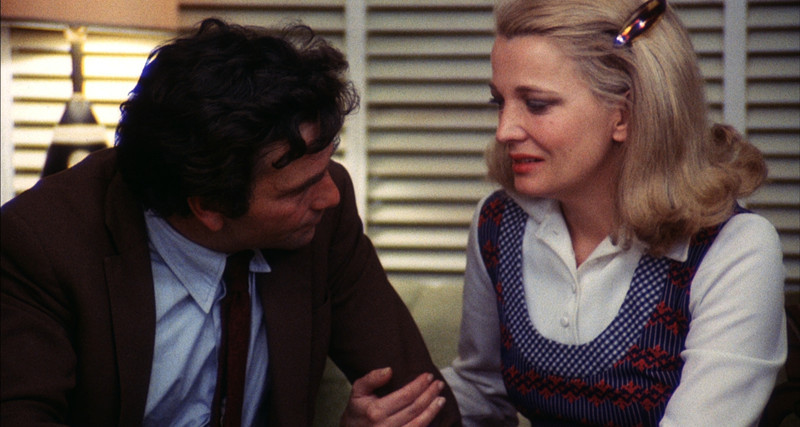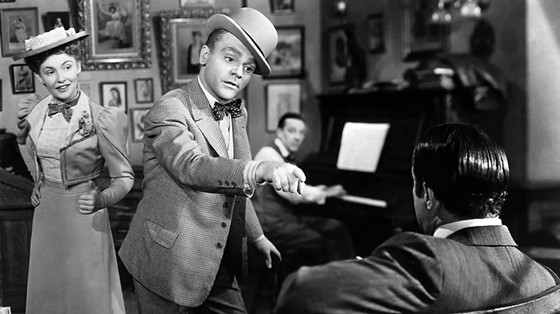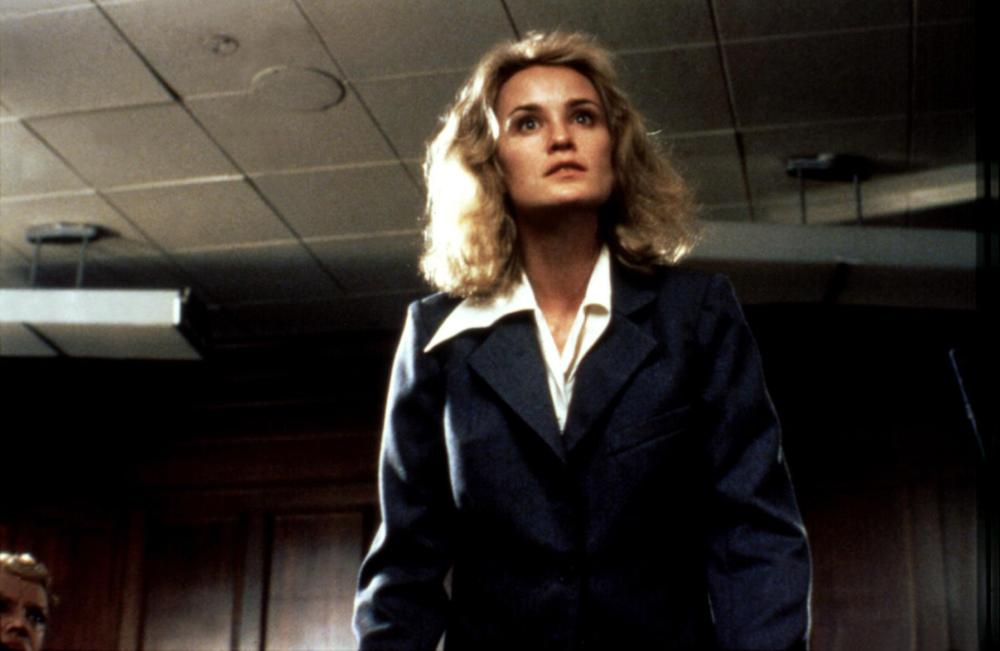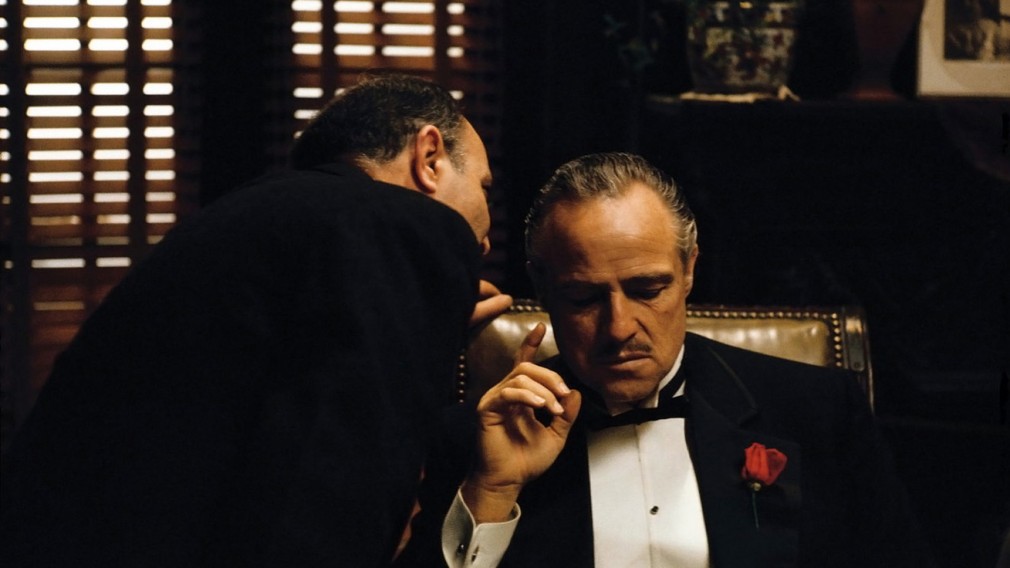5. Henry Fonda-Once Upon a Time in the West

Sadly, many of us never experienced Henry Fonda’s appearance in Once Upon a Time in the West like many audiences did when it was first released. Here was a western film starring one of cinema’s greatest American heroes. Whether he was in The Grapes of Wrath or 12 Angry Men, or even just being a riot (like in The Lady Eve), Fonda was America’s golden boy on screen.
To see Frank, played by Fonda, murder an entire family and then shoot the remaining child point blank in the face was a major shock at the time. There may not be a current equivalent today, but Leonardo DiCaprio in Django Unchained is somewhat of a current comparison that can be made.
However, most people went into Django Unchained knowing DiCaprio was going to play a villain. Having Tom Joad slaughter a family and take advantage of (or torture) everyone around him is still shocking to this day.
4. Gena Rowlands-A Woman Under the Influence

Gena Rowlands is rightfully seen as a screen legend now, but she wasn’t working as frequently as you’d expect at first. Most of her work was with her husband John Cassavetes. You could argue that Rowlands didn’t quite have a type, but her entry here isn’t just what Rowlands did for herself; it’s what she did for women in cinema.
Her most iconic work is her role as Mabel in A Woman Under the Influence: a sacrificial role where Rowlands puts her character’s mental struggles on full display in a raw and unsettling way. Her weathered look and lack of makeup was her own decision, and she took full control of what her character could represent for women and those suffering from mental illnesses. It was almost like we watched Cassavetes work on a Rowlands film this time, as her hyper-realism changed her own path (and the path of cinematic performances, too).
3. James Cagney-Yankee Doodle Dandy

So, James Cagney deservedly has an Academy Award to his name. Did he win for The Public Enemy? What about Angels with Dirty Faces? Oh! Surely it was for White Heat, where his mixture of having evil tendencies and a tortured soul was one of the greatest performances put to film! Actually, it wasn’t. It was his take on the entertainer George M. Cohan in the musical Yankee Doodle Dandy.
If you only know Cagney on the surface, this might be a major surprise, because he usually is associated with playing noir baddies. This is actually a peculiar entry, because Cagney—believe it or not—was previously a song based entertainer before he made it big. He fought to play Cohan in this film, knowing he could pull off the numbers, charm, and the incredible stair-dance sequence. He knew he could do it, but the world sure as hell didn’t think so until afterwards.
2. Jessica Lange-Frances

No one would question Jessica Lange’s capabilities now, but there was a time where she wasn’t really taken as seriously. After her role as Dawn in the 1976 King Kong, and her brief stint as an angel in All That Jazz, Lange’s potential was presumably already reached. She tried her first drama in The Postman Always Rings Twice, which potentially helped lead her to a more successful drama a year later (nonetheless, this film was panned at the time).
In 1982, however, we got two sides to Lange that cemented her career as a superstar: her refined comedic charm in Tootsie, and the tour-de-force performance in Frances. As Frances Farmer, Lange goes so deeply into her performance, that her struggles are almost too real to withstand.
As an actress that was challenged for her political beliefs (and was considered insane), Lange makes Farmer’s battles against the world depressing to witness. Lange won Best Supporting Actress for Tootsie, but many consider this win an acknowledgement that the Best Actress award couldn’t go to both Lange for Frances and Meryl Streep for Sophie’s Choice. Either way, people were comparing Lange to the then-established Streep, and that says enough about how well she did in Frances.
1. Marlon Brando-The Godfather

Marlon Brando may be both a legend and an infamous character now. His stories of refusing to cooperate have become a mainstay in contemporary cinema discussions. His my-way-or-the-highway attitude was always in full effect, but one film kind of granted him the ability to even continue this stipulation.
This is the same film that came after many works of Brando catering to blue collared Americans, being featured as America’s male sex icon, and his minimalism (which was used in full effect in films like On the Waterfront).
In The Godfather, Brando transformed as Vito Corleone. He auditioned with cotton balls in his mouth to affect the appearance of his jaw (a mouthpiece was made for the actual shooting). He slurred even more than usual to imply physical deterioration. He even brought a cat on set and toyed with it while shooting scenes (which were placed early in the film).
This drastic transformation ensured that Brando had even more up his sleeve than expected, and it made his crazy decisions from there on out accepted (no matter what they were, including the weird hat in The Island of Dr. Moreau). Brando was already a cinematic star, but his work as Vito Corleone made him insurmountable as one of the medium’s greatest performers.